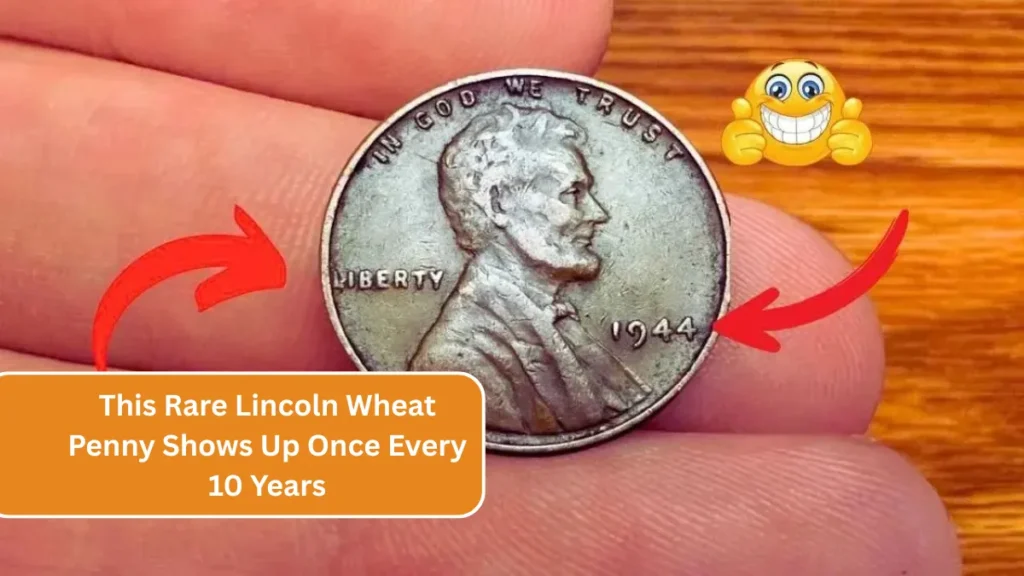You May Think a Penny Is Just One Cent
A penny might seem like just a small coin—not even worth picking up off the ground. But what if that same coin, specifically a Lincoln Wheat Penny, was worth $1.5 billion? It sounds unreal, but it’s true. A coin that once cost almost nothing could now be one of the most valuable in history.
In this article, you’ll learn the story behind this incredible coin, why it’s so valuable, how it might still be out there, and what signs to look for. We’ve kept the language simple so anyone can follow along.
History of the Lincoln Wheat Penny
The Lincoln Wheat Penny first appeared in 1909 to honor the 100th birthday of President Abraham Lincoln. It was the first U.S. coin to show a real person’s face. On the front (obverse) is Lincoln’s image, and on the back (reverse) are two wheat stalks—one on each side—symbolizing growth.
This design remained until 1958 when the Lincoln Memorial replaced the wheat stalks. Due to its age and design, this penny is already a favorite among collectors. But there’s one special version that stands out above all others.
Why Is One Lincoln Wheat Penny Worth $1.5 Billion?
So, what makes this one penny so valuable? Here are the main reasons:
- Rare Mint Error: This specific penny is believed to have a unique mistake made during production—one that hasn’t been seen in any other coin.
- Made During a Special Time: Some experts think it was created during a transition year, possibly with experimental metal or an old coin die.
- Perfect Condition: The coin is said to be in mint, flawless condition—extremely rare for a coin over 60 years old.
- Mystery: No one knows exactly where it came from. It was found in a private collection, and the mystery adds to its value.
- Huge Demand: Collectors around the world are eager to own it. One collector even offered $1.5 billion for it, making it one of the most valuable coins ever.
Overview Table: Lincoln Wheat Penny Quick Facts
| Feature | Details |
|---|---|
| Coin Name | Lincoln Wheat Penny |
| First Year Issued | 1909 |
| Last Year with Wheat Design | 1958 |
| Most Valuable Version | Unknown year, mint error, perfect condition |
| Estimated Top Value | $1.5 Billion |
| Typical Value in Circulation | 1¢ to $100 (based on year and condition) |
| Special Features | Minting error, rare material, perfect condition |
| Still in Circulation? | Yes, common versions are still found |
| Collectors’ Favorite Years | 1909-S VDB, 1914-D, 1943 copper, and others with errors |
Could This Billion-Dollar Penny Still Be in Circulation?
Yes, it’s possible that this ultra-rare penny is still out there. Many people don’t know what to look for and might spend or trade it without realizing its value. Here’s why it could still exist in everyday use:
- People often cash in old jars or piggy banks without checking each coin.
- Someone may have unknowingly used it to make a regular purchase.
- It could be hidden in a private coin collection, with the owner unaware of its worth.
That’s why coin experts suggest always checking your change—especially older pennies.
How to Identify a Valuable Lincoln Wheat Penny
Here are simple steps to check if you might have a valuable Wheat Penny:
- Back Design: Look for two wheat stalks—this confirms it’s a Wheat Penny.
- Check the Year: Look for rare years like 1909-S VDB, 1914-D, and 1943 copper.
- Mint Mark: Under the year, look for a small letter like “D” (Denver), “S” (San Francisco), or no mark (Philadelphia).
- Condition: A shiny, uncirculated coin with no damage is much more valuable.
- Minting Errors: Look for doubled numbers, missing letters, or misaligned printing.
Important: If you find a coin that looks special, don’t clean it! Cleaning can reduce its value. Take it to a coin expert or grading service for evaluation.
FAQs
Q1: What makes the $1.5 billion Lincoln Wheat Penny so rare?
A: It has a one-of-a-kind minting error, flawless condition, and mysterious origin.
Q2: Can I still find Lincoln Wheat Pennies in my change?
A: Yes, regular Wheat Pennies still show up in circulation, though rare ones are harder to find.
Q3: Which years should I look out for?
A: Key years include 1909-S VDB, 1914-D, and 1943 copper pennies.
Q4: Should I clean old coins to make them look better?
A: No. Cleaning can lower their value. It’s best to keep coins as you find them and have them evaluated by a professional.
